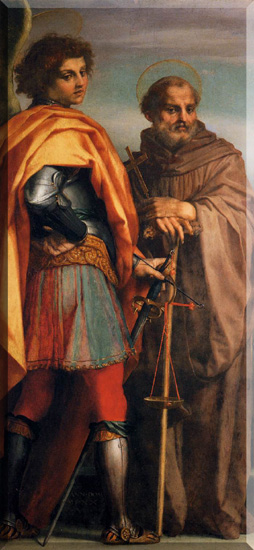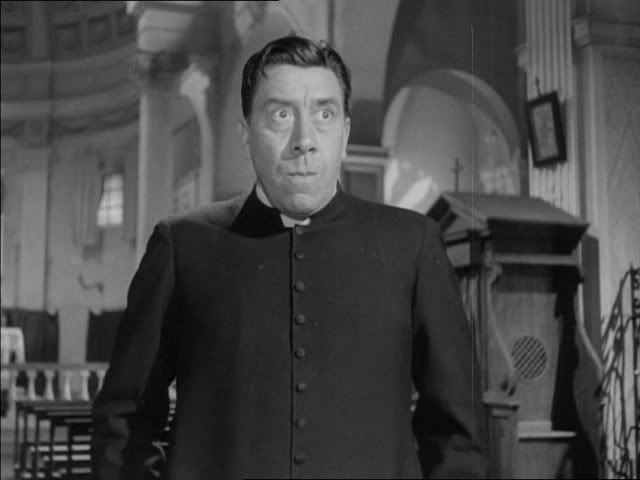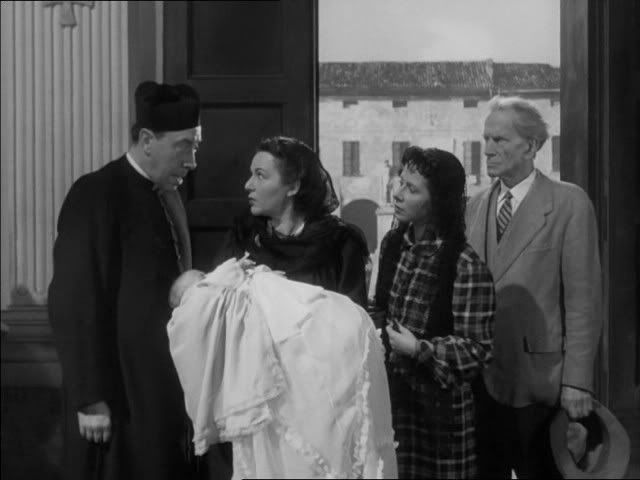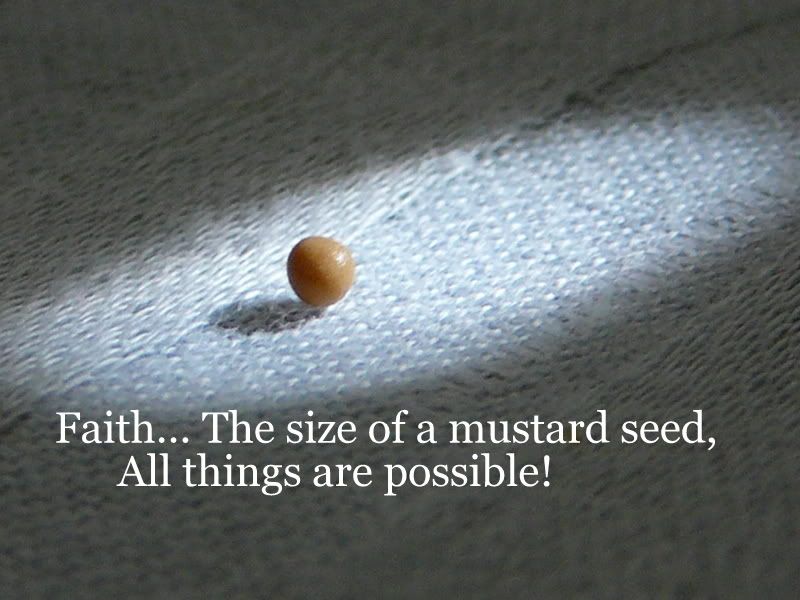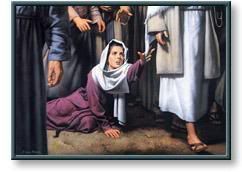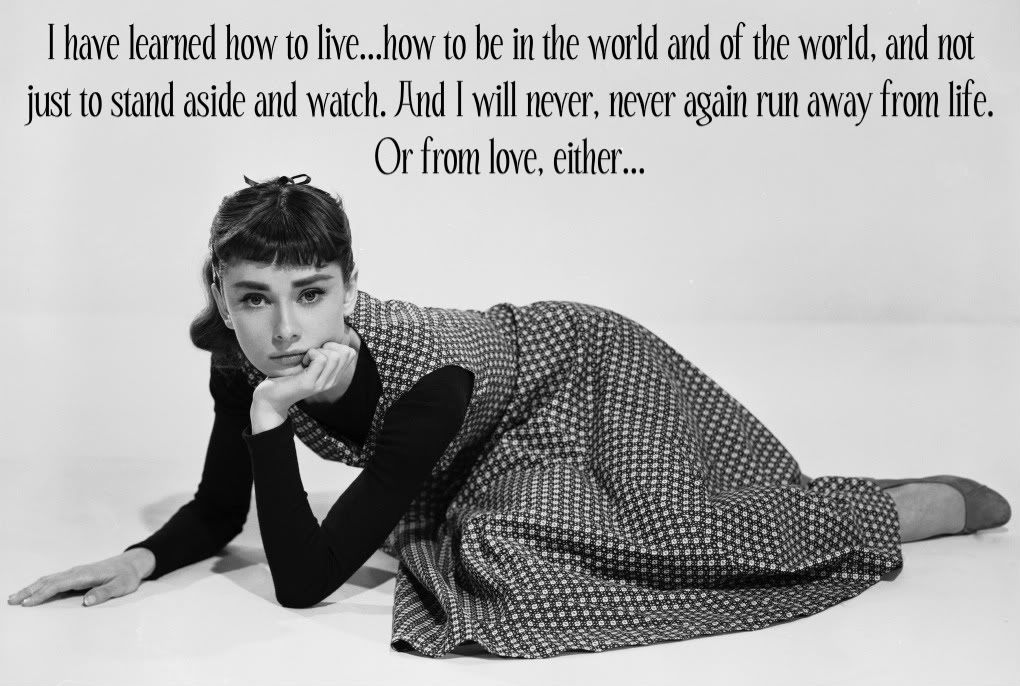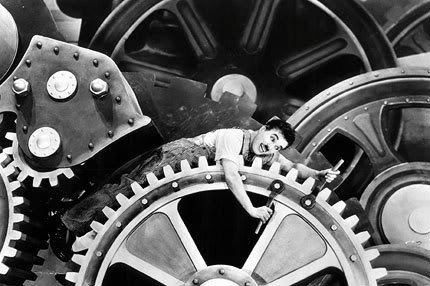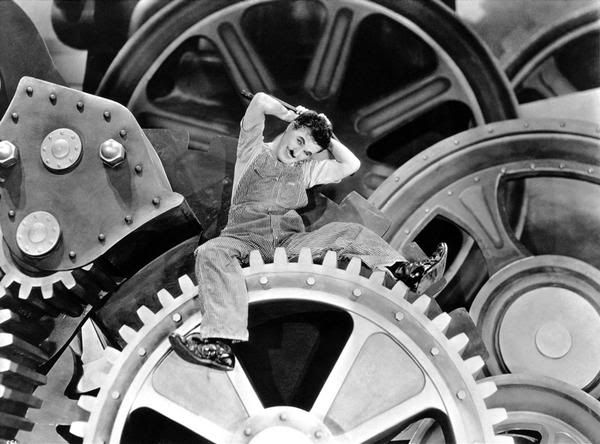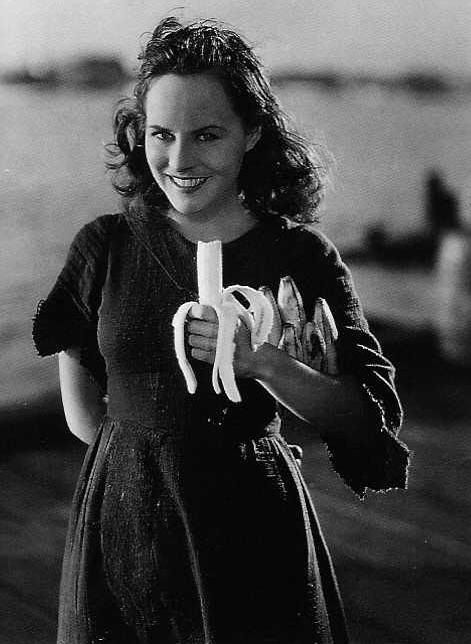+ JMJ +

Source: Secular Franciscans of LBI
Narration of "St. Louis of France" from "Stories of the Saints" by Grace Hall:
St. Louis of France was born in the 1200's. He was a beautiful boy, very religious and pious. This was helped by the fact that his mother was also a religious, pious woman. Unfortunately, he wasn't the strong type, but that's okay because neither am I. He had a tutor who didn't hesitate to chastise him when needed.
When Louis was 19, his mother arranged a marriage for him. Luckily for Louis, his bride was beautiful, very religious, like he was, and loving. Luckily for both of them, the marriage worked out, considering it was an arranged marriage. They both adored each other and stuck with each other through thick and thin. Margaret bore Louis no less than 11 children, which was very good.
Louis was a very just and kind king. He also went to the Crusades twice. The first time he went, everybody wasn't happy because Louis was very sick. Everybody was praying for him. God, in the end, decided to make him better. Louis, despite the fact that he looked dead, raised his arms and said, "I feel fantastic!" At least, that's what Miguel said. =)
Since he recovered, he wanted to go to the Crusades. He told the Bishop to place the cross of the Crusades on his breast. Everybody was worried that he would succumb to sickness again, since he had just recovered. Stay home, recover first!
Louis, however, ignored them, which was brave / foolish. He still wanted to go, so the Bishop relented and put the cross on his breast. He travelled to the Holy Land and brought his wife and children with him. He told his men, "All right, lads, if we die here, we will go to Heaven. If we are victorious, it is for God's glory!"
Unfortunately, he had one foe, which he could not defeat -- it was called disease. It weakened his men. Louis kept on fighting in the Holy Land until he was captured. All his friends wanted to ransom him, but he refused because ransom would come from taxes. So he remained captive for 4 years until he was able to pay his own ransom and went back to France.
On the way home, his ship was incredibly damaged near Cyprus. Somebody suggested that he and 500 people on board go to Cyprus. Louis could then go to the other ship and leave the 500 people behind. Louis didn't want to leave these people behind, never to return to France again. He brought them all safely home.
Louis continued to reign. He was one of the best kings France had ever had. He was kind, just and a loving family man. Unfortunately, Louis decided to go to the Crusades again. During a stopover in Tunis, he got sick and died. He died in a Franciscan monk's habit, and his last words were from a Psalm. His heart was taken to Sicily, where his brother reigned.
Louis also built the Sainte-Chapelle for God, where he placed the Holy Crown of Thorns, which he bought from Baldwin II. It's a great building.
He was canonized in 1297, which was a pretty short time, considering he died only 20 years before.

Source: St. Mary's Catholic Church
King St. Louis, pray for us!


